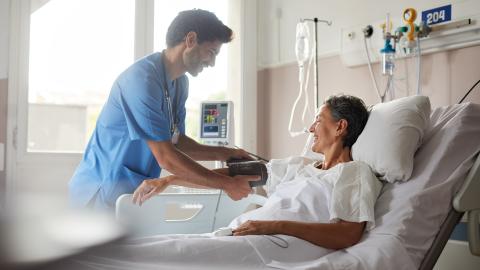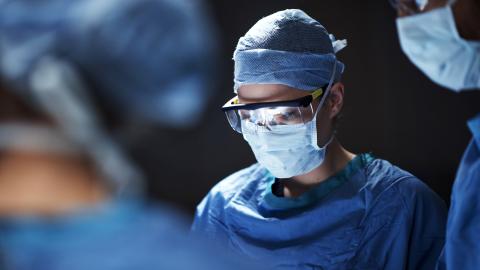Your recovery in hospital after cardiac surgery: activity and exercise

It is important for you to get up and move around as soon as you can. Lying in bed leads to muscle weakness and can cause blood clots and lung infections.

This video has subtitles in multiple languages. To access them, click on the wheel icon (settings) at the bottom right of the video player, click “Subtitles,” and then choose from the list of languages.
The benefits of activity when recovering from cardiac surgery
Activity has many benefits, including:
- Increasing strength.
- Preventing complications.
- Helping to get your bowels moving.
Remember to do your leg exercises (as explained in the "leg exercises" section on this page) while you are in bed.
On the day of your surgery, your nurse will get you up into a chair next to your bed or will help you to dangle your legs at the edge of your bed. When you start eating, try to sit up in the chair for all your meals.
As you improve each day, you will be able to do more for yourself. Keep your activities short and do them often rather than trying to do everything at once. We do not want you to get too tired.
We will encourage you to get up and walk around the unit as soon as you can. Most people are up and walking one to two days after surgery. In the beginning, it will be with assistance from the health-care team until you regain your independence.
Deep breathing and coughing exercise/ICOUGH protocol
After surgery, your lungs make extra mucus. Deep breathing and coughing exercises help clear this mucus from your lungs and prevent lung infections. Deep breathing opens up your lungs and helps loosen the mucus. Coughing helps remove the mucus from your lungs. Your health-care team may ask you to refer to your ICOUGH education booklet as well for additional strategies to prevent a lung infection.
Before beginning, ensure your pain score is at a level that allows you to do these exercises. Ask for pain medication at least 30 minutes before doing these exercises, if needed.
Deep breathing exercise |
Do EVERY HOUR while you are awake.
* The nursing staff may provide you with an incentive spirometer to help you with your deep breathing exercises. |
Coughing exercise |
Do EVERY TWO HOURS while you are awake and after your deep breathing exercise.
|
Moving around in bed
Change position in bed at least EVERY TWO HOURS. This helps keep you from getting stiff and gets blood flowing to your arms, legs, and skin. This also helps to prevent bed sores. You may find moving difficult because of incision pain. Initially, you will require assistance repositioning in bed after surgery, but this will become easier over time.
To move your body sideways |
|
To roll onto your side |
|
To sit up on the side of the bed |
|
To stand from sitting at the side of the bed or chair |
|
Leg Exercises
These leg exercises help keep the blood flowing through your legs, keep your muscles strong, and prevent stiff joints. These leg exercises reduce the chances of you getting a blood clot.
Hospital patients are at risk of having a blood clot form in the leg veins. This is called a deep venous thrombosis (DVT). Sometimes, the clot can break off and “travel” to the lungs, causing a pulmonary embolism (PE), making breathing difficult. Although it is rare, PE can be fatal.
You can reduce your risk of DVT/PE in the hospital by doing the following exercises. You will also receive an injectable blood thinner while you are in the hospital.
Do all these exercises EVERY HOUR while awake until you can get up and walk around the nursing unit.
Ankle pumps |
|
Ankle circles |
|
Hip flexion |
|
Thigh Muscle Contraction |
|
Protecting your sternum
Depending on the type of surgery you have, most people will have a sternotomy - a cut along the chest and through the sternum (breastbone). The sternum is then held together with stainless steel wires that stay in place long-term. After a sternotomy, the breastbone will take two to three months to heal. During this time, you must follow sternal precautions which include:
- No lifting anything weighing more than five to 10 pounds.
- Avoiding pushing or pulling with your arms.
- Hugging your chest when coughing.














